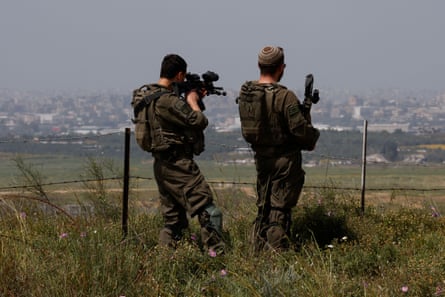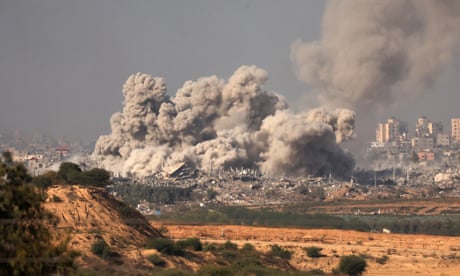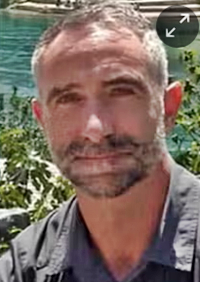Israel used AI to identify 37,000 Hamas targets

By Guardian - Bethan McKernan and Harry Davies - Wed 3 Apr 2024
Israeli intelligence sources reveal use of ‘Lavender’ system in Gaza war and claim permission given to kill civilians in pursuit of low-ranking militants.
The Israeli military’s bombing campaign in Gaza used a previously undisclosed AI-powered database that at one stage identified 37,000 potential targets based on their apparent links to Hamas, according to intelligence sources involved in the war.
In addition to talking about their use of the AI system, called Lavender, the intelligence sources claim that Israeli military officials permitted large numbers of Palestinian civilians to be killed, particularly during the early weeks and months of the conflict.
Their unusually candid testimony provides a rare glimpse into the first-hand experiences of Israeli intelligence officials who have been using machine-learning systems to help identify targets during the six-month war.
Israel’s use of powerful AI systems in its war on Hamas has entered uncharted territory for advanced warfare, raising a host of legal and moral questions, and transforming the relationship between military personnel and machines.
“This is unparalleled, in my memory,” said one intelligence officer who used Lavender, adding that they had more faith in a “statistical mechanism” than a grieving soldier. “Everyone there, including me, lost people on October 7. The machine did it coldly. And that made it easier.”
Another Lavender user questioned whether humans’ role in the selection process was meaningful. “I would invest 20 seconds for each target at this stage, and do dozens of them every day. I had zero added-value as a human, apart from being a stamp of approval. It saved a lot of time.”

The testimony from the six intelligence officers, all who have been involved in using AI systems to identify Hamas and Palestinian Islamic Jihad (PIJ) targets in the war, was given to the journalist Yuval Abraham for a report published by the Israeli-Palestinian publication +972 Magazine and the Hebrew-language outlet Local Call.
Their accounts were shared exclusively with the Guardian in advance of publication. All six said that Lavender had played a central role in the war, processing masses of data to rapidly identify potential “junior” operatives to target. Four of the sources said that, at one stage early in the war, Lavender listed as many as 37,000 Palestinian men who had been linked by the AI system to Hamas or PIJ.
Lavender was developed by the Israel Defense Forces’ elite intelligence division, Unit 8200, which is comparable to the US’s National Security Agency or GCHQ in the UK.
Several of the sources described how, for certain categories of targets, the IDF applied pre-authorised allowances for the estimated number of civilians who could be killed before a strike was authorised.
Two sources said that during the early weeks of the war they were permitted to kill 15 or 20 civilians during airstrikes on low-ranking militants. Attacks on such targets were typically carried out using unguided munitions known as “dumb bombs”, the sources said, destroying entire homes and killing all their occupants.
“You don’t want to waste expensive bombs on unimportant people – it’s very expensive for the country and there’s a shortage [of those bombs],” one intelligence officer said. Another said the principal question they were faced with was whether the “collateral damage” to civilians allowed for an attack.
“Because we usually carried out the attacks with dumb bombs, and that meant literally dropping the whole house on its occupants. But even if an attack is averted, you don’t care – you immediately move on to the next target. Because of the system, the targets never end. You have another 36,000 waiting.”
According to conflict experts, if Israel has been using dumb bombs to flatten the homes of thousands of Palestinians who were linked, with the assistance of AI, to militant groups in Gaza, that could help explain the shockingly high death toll in the war.
The health ministry in the Hamas-run territory says 32,000 Palestinians have been killed in the conflict in the past six months. UN data shows that in the first month of the war alone, 1,340 families suffered multiple losses, with 312 families losing more than 10 members.

Responding to the publication of the testimonies in +972 and Local Call, the IDF said in a statement that its operations were carried out in accordance with the rules of proportionality under international law. It said dumb bombs are “standard weaponry” that are used by IDF pilots in a manner that ensures “a high level of precision”.
The statement described Lavender as a database used “to cross-reference intelligence sources, in order to produce up-to-date layers of information on the military operatives of terrorist organisations. This is not a list of confirmed military operatives eligible to attack.
“The IDF does not use an artificial intelligence system that identifies terrorist operatives or tries to predict whether a person is a terrorist,” it added. “Information systems are merely tools for analysts in the target identification process.”
Lavender created a database of tens of thousands of individuals
In earlier military operations conducted by the IDF, producing human targets was often a more labour-intensive process. Multiple sources who described target development in previous wars to the Guardian, said the decision to “incriminate” an individual, or identify them as a legitimate target, would be discussed and then signed off by a legal adviser.
In the weeks and months after 7 October, this model for approving strikes on human targets was dramatically accelerated, according to the sources. As the IDF’s bombardment of Gaza intensified, they said, commanders demanded a continuous pipeline of targets.
“We were constantly being pressured: ‘Bring us more targets.’ They really shouted at us,” said one intelligence officer. “We were told: now we have to fuck up Hamas, no matter what the cost. Whatever you can, you bomb.”
To meet this demand, the IDF came to rely heavily on Lavender to generate a database of individuals judged to have the characteristics of a PIJ or Hamas militant.
Details about the specific kinds of data used to train Lavender’s algorithm, or how the programme reached its conclusions, are not included in the accounts published by +972 or Local Call. However, the sources said that during the first few weeks of the war, Unit 8200 refined Lavender’s algorithm and tweaked its search parameters.
After randomly sampling and cross-checking its predictions, the unit concluded Lavender had achieved a 90% accuracy rate, the sources said, leading the IDF to approve its sweeping use as a target recommendation tool.
Lavender created a database of tens of thousands of individuals who were marked as predominantly low-ranking members of Hamas’s military wing, they added. This was used alongside another AI-based decision support system, called the Gospel, which recommended buildings and structures as targets rather than individuals.

The accounts include first-hand testimony of how intelligence officers worked with Lavender and how the reach of its dragnet could be adjusted. “At its peak, the system managed to generate 37,000 people as potential human targets,” one of the sources said. “But the numbers changed all the time, because it depends on where you set the bar of what a Hamas operative is.”
They added: “There were times when a Hamas operative was defined more broadly, and then the machine started bringing us all kinds of civil defence personnel, police officers, on whom it would be a shame to waste bombs. They help the Hamas government, but they don’t really endanger soldiers.”
Before the war, US and Israeli estimated membership of Hamas’s military wing at approximately 25-30,000 people.

In the weeks after the Hamas-led 7 October assault on southern Israel, in which Palestinian militants killed nearly 1,200 Israelis and kidnapped about 240 people, the sources said there was a decision to treat Palestinian men linked to Hamas’s military wing as potential targets, regardless of their rank or importance.
The IDF’s targeting processes in the most intensive phase of the bombardment were also relaxed, they said. “There was a completely permissive policy regarding the casualties of [bombing] operations,” one source said. “A policy so permissive that in my opinion it had an element of revenge.”
Another source, who justified the use of Lavender to help identify low-ranking targets, said that “when it comes to a junior militant, you don’t want to invest manpower and time in it”. They said that in wartime there was insufficient time to carefully “incriminate every target”.
“So you’re willing to take the margin of error of using artificial intelligence, risking collateral damage and civilians dying, and risking attacking by mistake, and to live with it,” they added.
‘It’s much easier to bomb a family’s home’
The testimonies published by +972 and Local Call may explain how such a western military with such advanced capabilities, with weapons that can conduct highly surgical strikes, has conducted a war with such a vast human toll.
When it came to targeting low-ranking Hamas and PIJ suspects, they said, the preference was to attack when they were believed to be at home. “We were not interested in killing [Hamas] operatives only when they were in a military building or engaged in a military activity,” one said. “It’s much easier to bomb a family’s home. The system is built to look for them in these situations.”

Such a strategy risked higher numbers of civilian casualties, and the sources said the IDF imposed pre-authorised limits on the number of civilians it deemed acceptable to kill in a strike aimed at a single Hamas militant. The ratio was said to have changed over time, and varied according to the seniority of the target.
According to +972 and Local Call, the IDF judged it permissible to kill more than 100 civilians in attacks on a top-ranking Hamas officials. “We had a calculation for how many [civilians could be killed] for the brigade commander, how many [civilians] for a battalion commander, and so on,” one source said.
“There were regulations, but they were just very lenient,” another added. “We’ve killed people with collateral damage in the high double digits, if not low triple digits. These are things that haven’t happened before.” There appears to have been significant fluctuations in the figure that military commanders would tolerate at different stages of the war.
One source said that the limit on permitted civilian casualties “went up and down” over time, and at one point was as low as five. During the first week of the conflict, the source said, permission was given to kill 15 non-combatants to take out junior militants in Gaza. However, they said estimates of civilian casualties were imprecise, as it was not possible to know definitively how many people were in a building.
Another intelligence officer said that more recently in the conflict, the rate of permitted collateral damage was brought down again. But at one stage earlier in the war they were authorised to kill up to “20 uninvolved civilians” for a single operative, regardless of their rank, military importance, or age.
“It’s not just that you can kill any person who is a Hamas soldier, which is clearly permitted and legitimate in terms of international law,” they said. “But they directly tell you: ‘You are allowed to kill them along with many civilians.’ … In practice, the proportionality criterion did not exist.”
The IDF statement said its procedures “require conducting an individual assessment of the anticipated military advantage and collateral damage expected … The IDF does not carry out strikes when the expected collateral damage from the strike is excessive in relation to the military advantage.” It added: “The IDF outright rejects the claim regarding any policy to kill tens of thousands of people in their homes.”
Experts in international humanitarian law who spoke to the Guardian expressed alarm at accounts of the IDF accepting and pre-authorising collateral damage ratios as high as 20 civilians, particularly for lower-ranking militants. They said militaries must assess proportionality for each individual strike.

An international law expert at the US state department said they had “never remotely heard of a one to 15 ratio being deemed acceptable, especially for lower-level combatants. There’s a lot of leeway, but that strikes me as extreme”.
Sarah Harrison, a former lawyer at the US Department of Defense, now an analyst at Crisis Group, said: “While there may be certain occasions where 15 collateral civilian deaths could be proportionate, there are other times where it definitely wouldn’t be. You can’t just set a tolerable number for a category of targets and say that it’ll be lawfully proportionate in each case.”
Whatever the legal or moral justification for Israel’s bombing strategy, some of its intelligence officers appear now to be questioning the approach set by their commanders. “No one thought about what to do afterward, when the war is over, or how it will be possible to live in Gaza,” one said.
Another said that after the 7 October attacks by Hamas, the atmosphere in the IDF was “painful and vindictive”. “There was a dissonance: on the one hand, people here were frustrated that we were not attacking enough. On the other hand, you see at the end of the day that another thousand Gazans have died, most of them civilians.”
Guardian Newsroom: The unfolding crisis in the Middle East
On Tuesday 30 April, 7-8.15pm GMT, join Devika Bhat, Peter Beaumont, Emma Graham-Harrison and Ghaith Abdul-Ahad as they discuss the fast-developing crisis in the Middle East. Book tickets here or at theguardian.live

‘Very best of humanity’: the seven aid workers killed in Israeli airstrike
Families and others pay tribute to the World Central Kitchen staff hit leaving Gaza food warehouse

By Guardian - Emine Sinmaz - Wed 3 Apr 2024 17.53
The World Central Kitchen has described the seven aid workers who were killed in an Israeli airstrike in Gaza as the “very best of humanity”. Three British nationals, an Australian, a Polish national, an American-Canadian dual citizen and a Palestinian were killed when their convoy was hit as it was leaving the Deir al-Balah warehouse on Monday.
Here is what is known about the victims:
James Kirby

James Kirby, 47, who was born in Bristol, was a military veteran working in the charity’s security team.
He worked for the security firm Solace Global, based in Poole, Dorset, and was a former sniper marksman and rifleman, according to his LinkedIn profile. Kirby described himself as someone who maintained “a calm demeanour under extreme pressure, including life-threatening situations”.
In a statement, his family said he was a “genuine gentleman”, adding: “James understood the dangers of venturing into Gaza, drawing from his experiences in the British armed forces, where he bravely served tours in Bosnia and Afghanistan. Despite the risks, his compassionate nature drove him to offer assistance to those in dire need.”
John Chapman

John Chapman, 57, who was born in Aylesbury, Buckinghamshire, was also working for Solace Global among the charity’s security team. He was reported to have been a former member of special forces.
In a statement released through the Foreign Office, his family described him as an “incredible father, husband, son and brother”.
They said he “died trying to help people and was subject to an inhumane act. He was loved by many and will for ever be a hero. He will be missed dearly,” they added.
James Henderson

James Henderson, 33, who was born in Truro, Cornwall, worked for Solace Global, also as part of the relief team’s security detail.
According to his LinkedIn page he served for six years in the Royal Marines before working for private security firms.
He described himself as “a highly disciplined, courteous and proactive individual who is mobile, offers flexibility and is willing to take on any further training necessary to offer the best service possible” and said he “takes the health and safety of others very seriously”.
Saif Issam Abu Taha

Saif Issam Abu Taha, 27, had worked for World Central Kitchen as a driver and translator since the beginning of the year, his relatives said.
His brothers described him as “dedicated young man” eager to help fellow Palestinians. They also said he was a successful businessman who had dreamed of getting married.
He was buried in a ceremony attended by hundreds of people in his home town of Rafah on Tuesday.
Zomi Frankcom

Zomi Frankcom, 43, an Australian national, had worked for the World Central Kitchen for the past five years and had travelled to the US and Thailand.
In a statement, relatives described her as an “outstanding human being” who was “killed doing the work she loves delivering food to the people of Gaza”.
The Australian prime minister, Anthony Albanese, said: “She is someone who clearly was concerned about her fellow humanity.”
Damian Sobol

Damian Sobol, 36, came from the south-eastern Polish city of Przemyśl, where he was studying hospitality.
He joined World Central Kitchen in 2022, and had been on aid missions in Ukraine, Morocco and Turkey. For the past six months he had worked in Gaza and had been documenting the charity’s missions on social media in the days before he was killed.
Wojciech Bakun, the mayor of Przemyśl, wrote on Facebook: “There are no words to describe the feelings of people who knew this amazing young man right now.”
Jacob Flickinger

Jacob Flickinger, 33, a dual US-Canadian citizen, had reportedly been working in Gaza since the start of March after a previous stint volunteering for the NGO in Mexico, according to Agence France-Presse. He was the father of a one-year-old boy, the agency added.
The Canadian prime minister, Justin Trudeau, said officials had spoken to the Israeli ambassador, Iddo Moed, to express “our dismay at the unacceptable deaths of a Canadian-American aid worker along with others … the world needs very clear answers as to how this happened”.
The Canadian foreign minister, Mélanie Joly, called for a full investigation and said in a post on X that strikes on humanitarian personnel were “absolutely unacceptable”.
